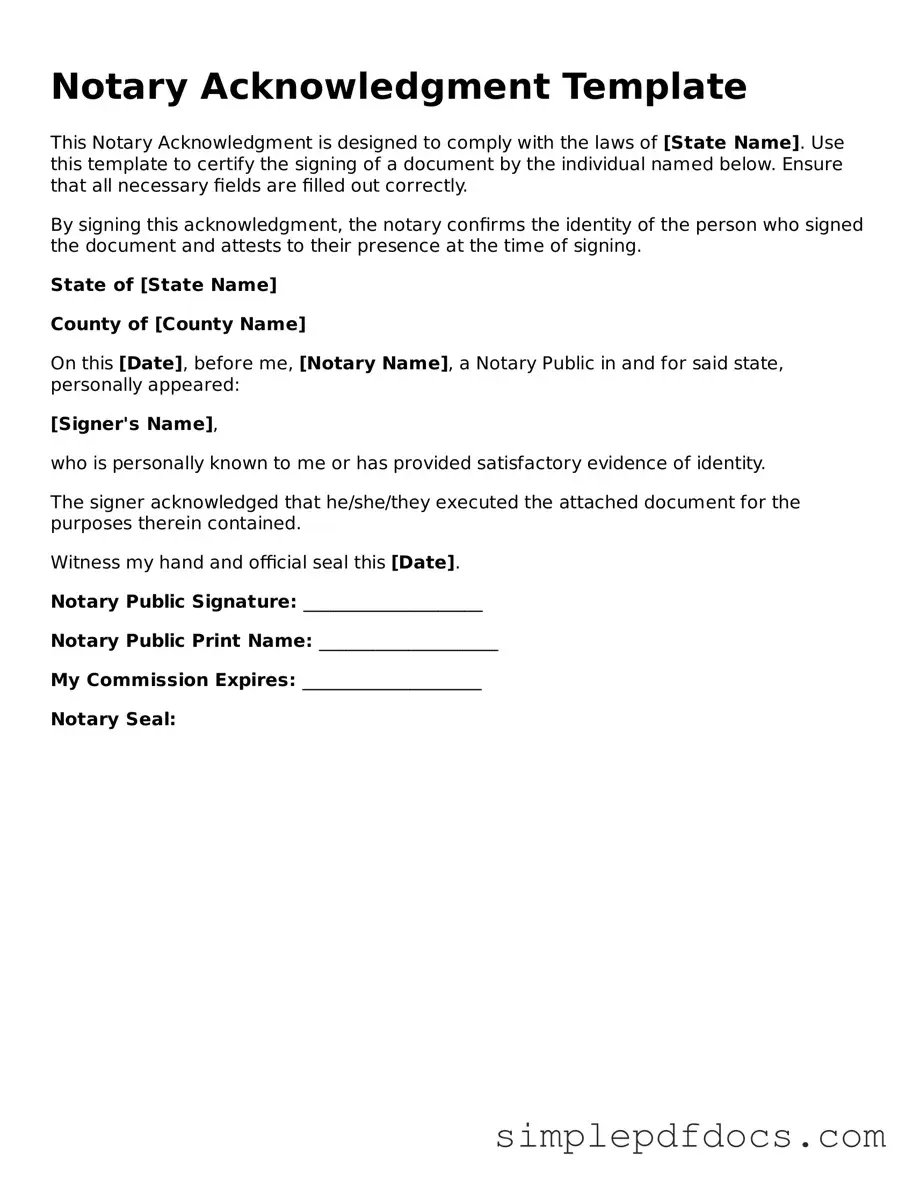Attorney-Approved Notary Acknowledgement Form
A Notary Acknowledgement form is a legal document used to verify the identity of a signer and confirm that they willingly signed a document. This form serves as an essential tool in many legal transactions, providing assurance to parties involved that the signature is authentic. Understanding its purpose and proper use is crucial for anyone engaging in official agreements.
Get Document Here
